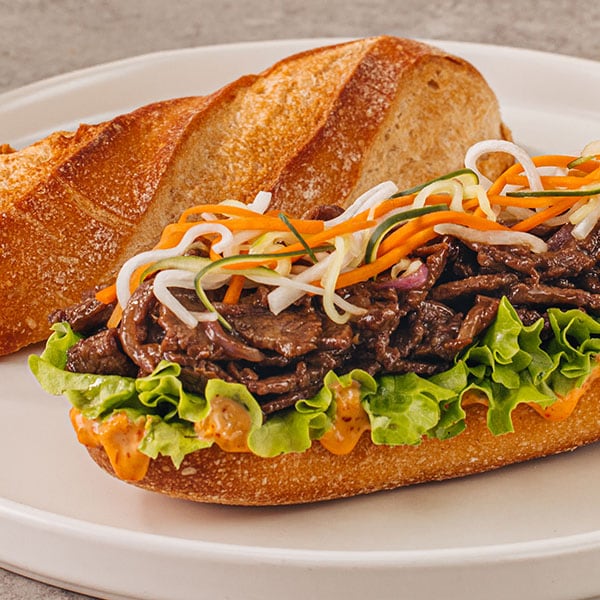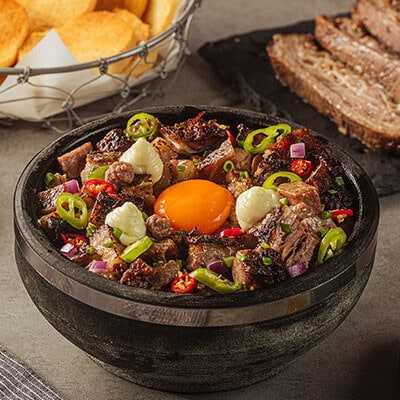
Tip #1: Ensure Your Business Is Discoverable
Is your restaurant already discoverable online? If not, you’re missing out on potential customers and increased revenues! Get started by listing your business on Google for free. Create a Business Profile (GBP), so you can appear on Google Search, Google Maps, and Google Shopping.
Ventures with comprehensive online information are more attractive (and reputable!) to consumers. In fact, complete profiles are 29% more likely to lead to a purchase. So, yes, include even your barangay and zip code. Make sure to add your menu, business hours, contact details, and online ordering options. Keep it dynamic with photos of your menu items and your interiors. And once people start leaving questions and reviews, expect improved visibility for your business.

Tip #2: Prepare a Social Media Calendar With Unique Content
Trying to decide how to market a food product online? Social media is the key! Popular networking sites are a way to reach and communicate with customers directly. Turn to Instagram, TikTok, and Facebook to post agile announcements and important updates about your menu, operations, and promos.
Still a bit clueless about how to start? Take beginner courses to help you navigate these platforms. Additionally, prepare monthly content calendars to grow your followers and keep them excited. One post a week is not enough!
To keep your audience engaged, consider tweaking your content for each social media site. For example, you’re ready to launch crispy chicken wings flavored with Knorr Sinigang sa Samapalok Mix for the holidays. For TikTok, you can publish a video about how you cook the dish (without revealing your secret!). Then, you can post countdown graphics on Instagram. Once the new menu item is out, you can feature customer reviews on Facebook.

Tip #3: Stay Active in Your Target Communities
But you can’t do all the marketing on social media yourself. You should also urge your customers to post photos, videos, and reviews about their experience. Promote a unified hashtag to make you searchable. Share and repost content that your wider audience will appreciate. And don’t forget to engage with these users by commenting and appreciating their efforts.
Optionally, you can reach out to key opinion leaders, a.k.a. influencers, to generate interest in your brand and products. Invite them to try your food and encourage them to publish honest reviews online. Eventually, the communities that listen to them will convert their curiosity into sales.

Tip #4: Make Online Ordering Available
Any way you can make your customers’ purchasing journey shorter and more seamless is an advantage. Some food businesses utilize their websites for e-commerce. Others rely on social media platforms. But if you plan to cater to a larger market, turn to third-party apps or transactions via mobile devices. There are pluses and minuses to using these, and you should weigh them before deciding on a route.
For instance, a third-party delivery app without real-time POS integration means you need to assign your staff to monitor orders closely. Can they still take this load? If not, you're better off taking advance orders via online forms. But consider the behavior of your customers, too. If they prefer mobile apps, search for one that won’t disrupt your operations.

Tip #5: Collaborate With Complementary Brands
A credible online marketing strategy for raising awareness about your business is to partner with complementary brands. Collaborations can work in a variety of ways. For example, if you sell desserts, you will benefit from connecting with a tea or coffee brand.
Or, if you’re looking to expand your menu with healthy offerings, consider collaborating with The Vegetarian Butcher. Take cues from other local establishments that have successfully introduced plant-based products, like NOMince and NOChicken Chunks, in their lineups.
Besides brands, you can partner with content creators or artists with similar beliefs and values. These collabs can lead to new products, promos, and branded merchandise. Why not release a new takeout box or a freebie shirt exclusively designed for your business? These will not only enhance the customer experience but also reflect your principles.

Tip #6: Maintain a Mobile-Friendly Site
Think about how many people order meals using their phones. If your online food business website isn’t mobile-friendly yet, potential customers will find it challenging to navigate and consider your brand outdated. That’s a lot of sales you’re letting slip.
So, it’s time to upgrade your site! Consider the following:
- Choose a mobile-responsive theme or template.
- Strip back your content.
- Compress image and video file sizes.
- Avoid using Flash.
- Reduce button sizes and optimize their placement.
- Space out links to reduce visual clutter.
- Use larger and more readable fonts.
- Remove pop-ups.

Tip #7: Don’t Forget About Your Food
All these restaurant marketing strategies will be futile if you neglect your menu. The bottom line is that your food must look, smell, and taste exceptional.
Then, find ways to translate the quality of your offerings into your promotional efforts. Curate the products you want to feature and make sure you’re tapping into food trends. Learn how to plate dishes creatively and always highlight the best features of your offerings when taking photos. You want your content to be intentional; don’t just post for the sake of posting.

Tip #8: Utilize Data to Improve Your Strategy
Collect, analyze, repeat. Data can be your best friend if you want to know if your online marketing strategy is effective. But don’t worry; no need to go all out examining graphs and numbers. Just learn the basics so you can determine what works and how to move forward.
The online space may be cluttered, but there are effective ways to stand out and thrive. Follow these tips when crafting a winning marketing strategy for your food business and see your sales soar. Embrace the digital frontier!



